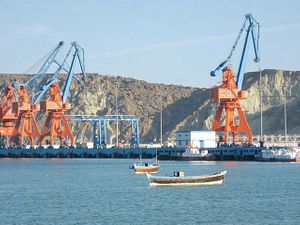In March 2018, the Center for Global Development, a U.S. think tank based in Washington, published a fascinating report. It claimed that China was posing a severe risk to the finances of a number of countries as a result of its aid activities and excessive lending. The report went on to list seven specific countries whose finances are at serious risk: Mongolia, Laos, Kyrgyzstan, Tajikistan, the Maldives, Djibouti, and Montenegro.
When advanced countries give out loans or other forms of aid, they generally impose a cap. This prevents them from lending excessive amounts. China, however, is not a member of the Organization for Economic Cooperation and Development (OECD). Nor is it a member of the Development Assistance Committee, the division of the OECD that regulates aid policy. This can present problems for borrowers. If a country borrows to the point that its fiscal health is at risk, that is a serious problem. How will it repay the loans? It is not unreasonable to expect that it might have to use controlling interests in ports, mines or other infrastructure as collateral to facilitate the repayments.
China’s “One Belt, One Road” (OBOR) policy is aimed at investing large sums of money in infrastructure development in the area between the two Silk Roads, in an effort to join them together and create one ordered area. This extends beyond mere economic activity, however, and includes establishing a whole host of rules, from cultural exchange to the movement of people.
Seen from the point of view of countries on the receiving end, Chinese support has a certain appeal over support from other advanced countries. Historically, support from advanced countries has been accompanied by a strong emphasis on areas such as democratization and human rights. It also tends to involve complex procedures, which take time to complete, and crucially doesn’t result in the country receiving much money. The framework of south-south cooperation favored by China is no doubt appealing too. However, China’s OBOR policy should not be considered purely from the Chinese perspective. Its partner countries are ultimately choosing China, which in turn bolsters Beijing’s dominance. This cannot be explained away in terms of a trade-off, as nothing more than a win-win relationship. It also relies on building trust. This is the first challenge posed by China.
In the context of China’s relationship with these countries, you might argue that if the other country has given its consent, what’s the problem? However, to find an example in recent history of a country that has made it its national objective to retrieve domestic interests that had been taken as collateral due to excessive lending, look no further than China itself. Beijing’s current actions are effectively the same as those that the Western powers took against China in the late nineteenth and early twentieth centuries. Countries on the receiving end of excessive lending from China need to be careful to avoid following the same path to modernization. That is the second challenge.
The third challenge comes down to whether or not China is leveraging economic, cultural and other forms of cooperation under OBOR to guarantee its military security. The infrastructure being built by China, including roads, railways and ports, will not only contribute to economic development in the region, it will also help to improve connectivity throughout Eurasia. At the same time, though, that infrastructure will benefit China’s military, enabling Beijing to secure an effective means for communication and the movement of troops in a contingency.
To be sure, China is not currently directly using this infrastructure for its own defense, and its base in Djibouti and other facilities are being used for anti-piracy measures off the coast of Somalia and peacekeeping operations (PKO) in regions such as South Sudan. In terms of capability, though, China’s base in Djibouti could potentially fulfill a role that goes beyond PKO and the control of piracy, and the port, railway and communication infrastructure could in theory be used not only for economic purposes but also for military purposes. In cases that involve enhancing this capability, doubts will be expressed by those countries if China does not maintain a certain degree of transparency and accountability and explain its intentions. And if Beijing makes loans that are beyond the ability of the recipient country to repay, China’s acquisition of controlling interests in the ports will give its neighbors to understand that it is leveraging this capability and its economic power to acquire those controlling interests. Those on the Chinese side no doubt view things from China’s perspective, but they would be well advised to take the views of its neighbors into account.
These are just three of many challenges on the horizon. For now, China’s neighbors will continue to keep a close eye on what it is doing. To continue down the road of win-win relationships, partnerships, “circles of friends” and shared destiny, China will need to build trust with other countries, underpinned by a situation that truly is win-win for both sides.
Shin Kawashima is a Professor of international relations at the Graduate School of Arts and Sciences, University of Tokyo.
































